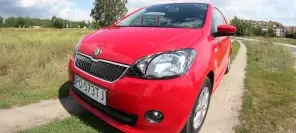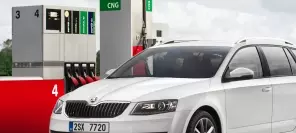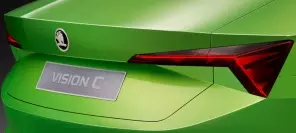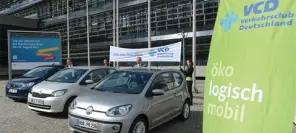- Main page
- Search
- Up to date
- Products
- Technology
- Vehicles
- Video
- Conversion Payback Simulator
Port Injection - Conversion Payback Simulator
Direct Injection - Conversion Payback Simulator
Diesel - Newsletter
Skoda Rapid LPG - insanely reasonable
- Home page
- Up to date
- Reportages, interviews, road tests
- Road tests
- Skoda Rapid LPG - insanely reasonable
« Powrót
 loading results...
loading results...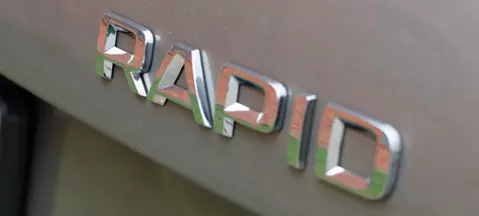 © gazeo.com
© gazeo.com 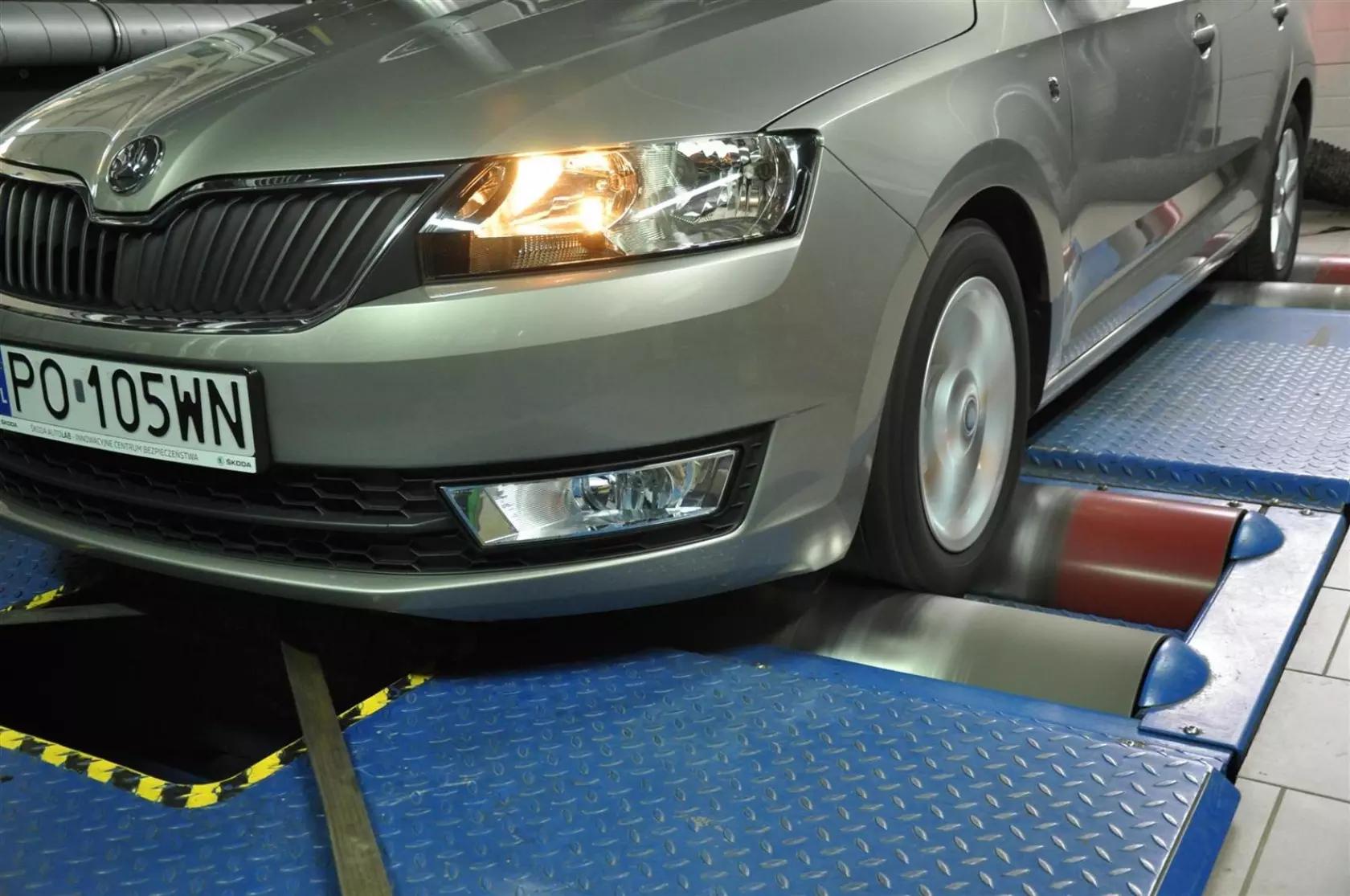 Measurements at the dyno showed power of 78 PS regardless of the type of fuel, because it turned out it was only petrol each time
Measurements at the dyno showed power of 78 PS regardless of the type of fuel, because it turned out it was only petrol each time 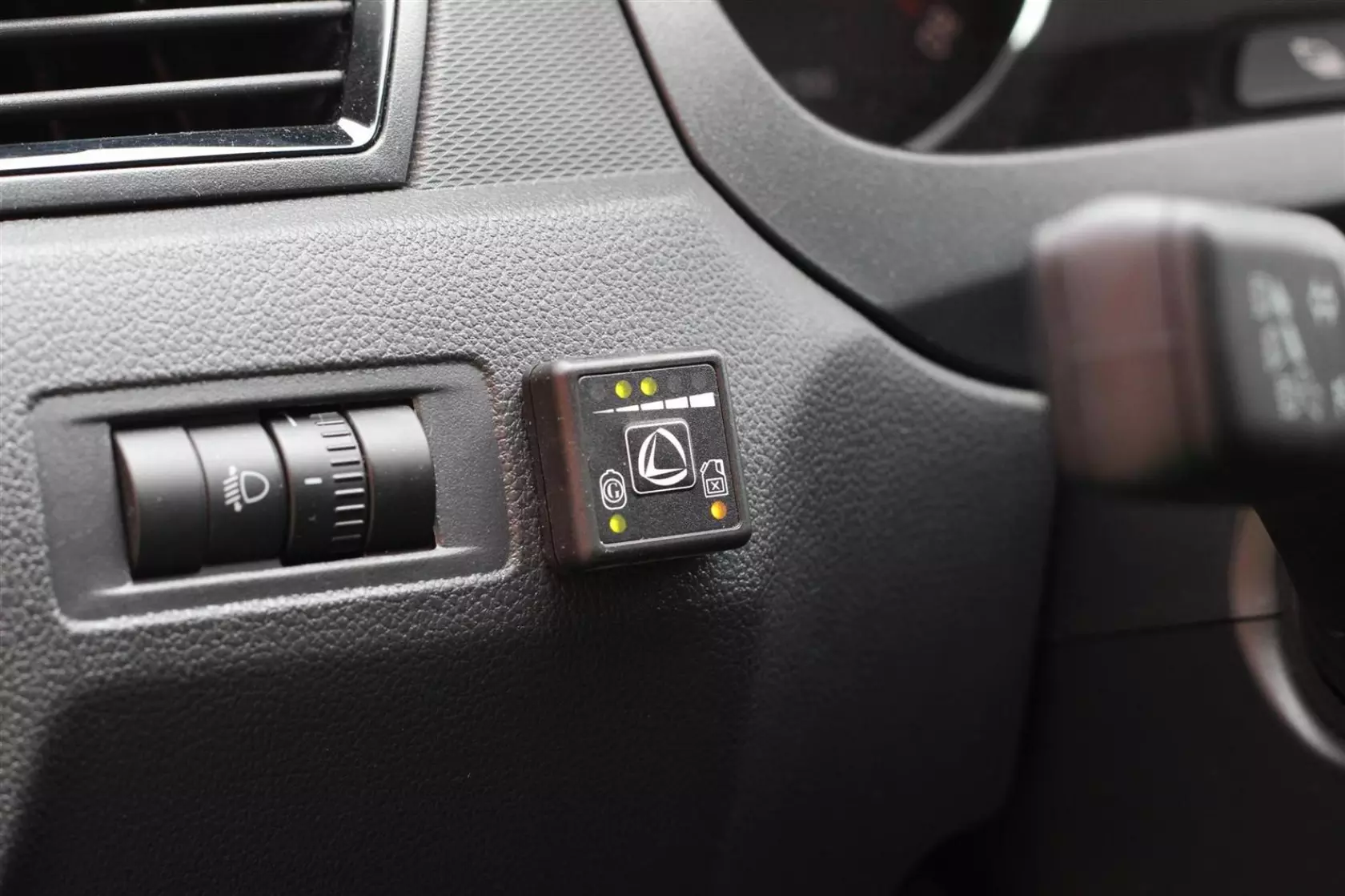 The fuel type switch is placed in a typical place, but drivers with unusual anatomy are at risk of obscuring it with the steering wheel
The fuel type switch is placed in a typical place, but drivers with unusual anatomy are at risk of obscuring it with the steering wheel  The Landi Renzo Omegas system ECU is placed between the battery and the fender
The Landi Renzo Omegas system ECU is placed between the battery and the fender 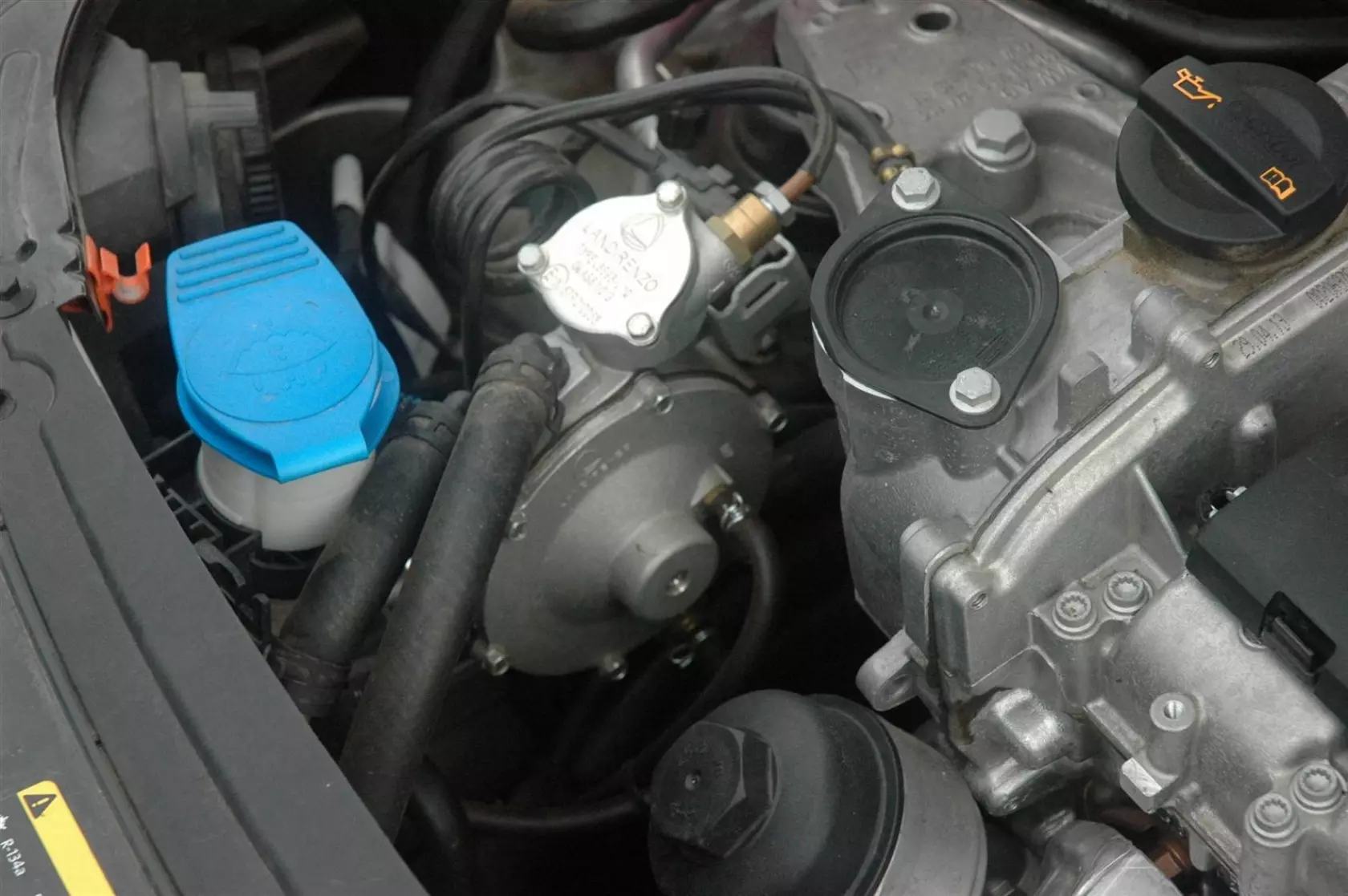 The LI 10 reducer has a large capacity reserve – it can cope with powering 190 PS engines
The LI 10 reducer has a large capacity reserve – it can cope with powering 190 PS engines 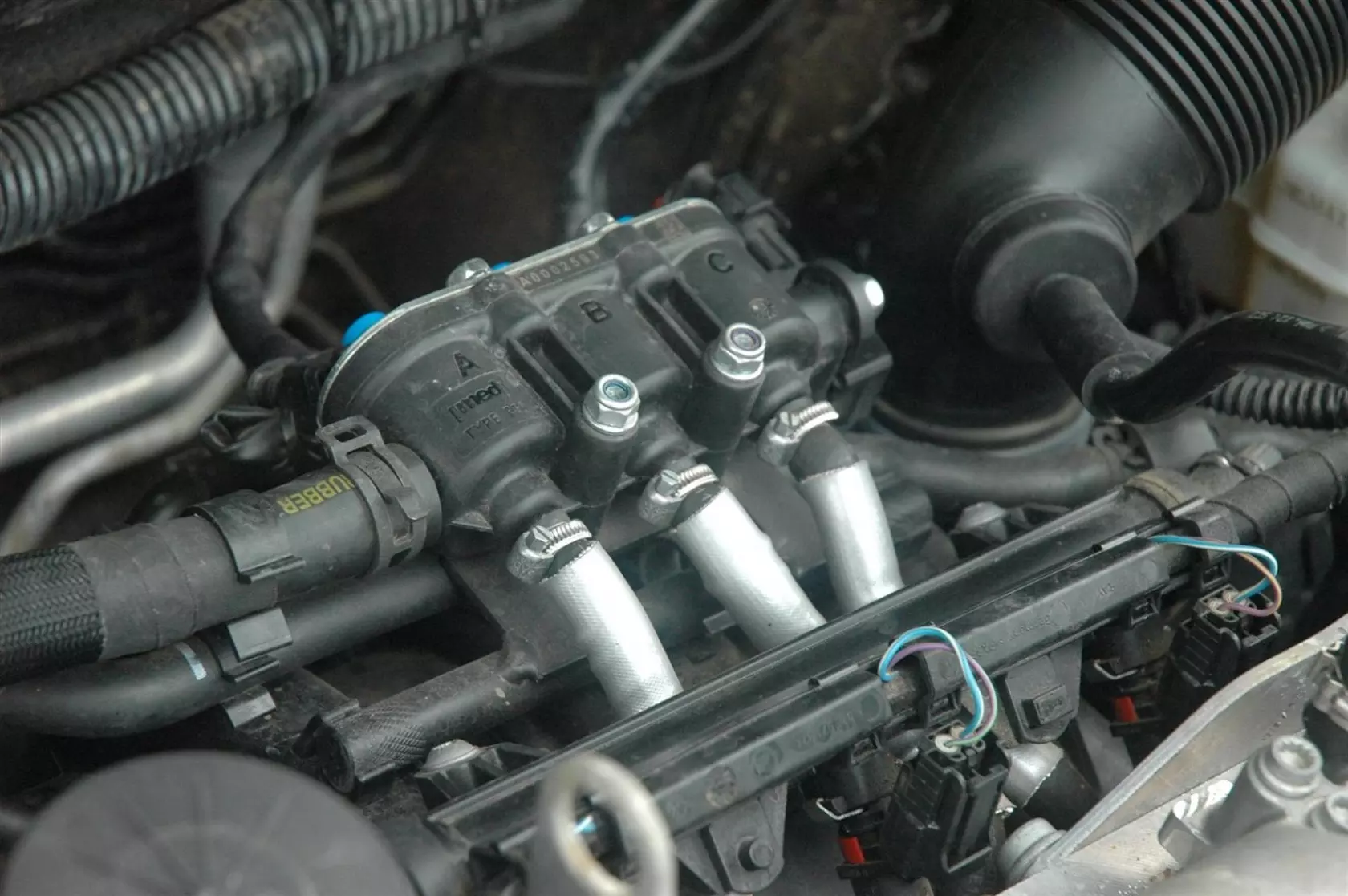 Three injectors (manufactured by MED in this case) lower the cost of possible regeneration, although after the latest modifications, their durability is said to be higher than before
Three injectors (manufactured by MED in this case) lower the cost of possible regeneration, although after the latest modifications, their durability is said to be higher than before 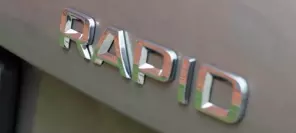





 © gazeo.comConnotations with the Volkswagen Passat seem quite reasonable – Skoda chases their superior from Wolfsburg in terms of quality, price and image
© gazeo.comConnotations with the Volkswagen Passat seem quite reasonable – Skoda chases their superior from Wolfsburg in terms of quality, price and imageThe 21st century Rapid (Skoda had already had two models of the same name – one before World War II and shortly thereafter, and one in the 1980's) looks like a smaller version of the Octavia. No wonder, because with a length of 4.48 m, it’s almost as long as the first generation of its older “sister”, and even beats it when it comes to wheelbase (2.6 to 2.51 m). So in the range of cars manufactured by the company from Mlada Boleslav, this model replaces Fabia sedan (already out of production for some time), but also partly Octavia, which – thanks to this new Skoda model – was allowed to grow a bit without leaving a gap in the company’s offer.
Typically for Skoda, Rapid gives the buyer more than its price would suggest. Although formally it’s a B-segment car, with its size as well as interior and booth capacity (550 l!) it’s almost compact class. With a price starting at approx. 9500 EUR (though with a discount in effect at the time of writing this article, Rapid is available at 9370 EUR with an LPG system already installed), it’s more expensive than Dacia Logan or the twin duet of Citroën C-Elysée/Peugeot 301, but it also has a certain advantage – a liftback body type, which combines the elegant presence of a sedan with the practical solution of a tailgate lifted along with the glass.
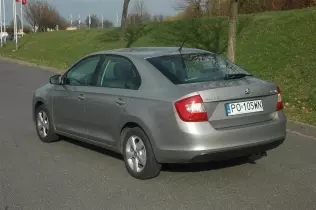 © gazeo.comElegant sedan appearance and hatchback’s practicality combined in one body is a successful compromise
© gazeo.comElegant sedan appearance and hatchback’s practicality combined in one body is a successful compromiseThinking outside the box is indeed a specialty of the Czech brand. For many years, Octavia has been the only or one of very few compact liftbacks, so has the Superb in D class (its dual function tailgate opens like in a liftback or a sedan), while Roomster is a little bit like a van, but not quite. Now we have the Rapid, also available in Spaceback version, somewhere between a hatchback and an estate car, presenting a more “youth” look, though devoid of some practical characteristics (due to a smaller trunk).
But let’s not waste more time, the test car is waiting. It has the only MPI engine offered (perhaps it’s here mainly because it can be adapted to LPG, but also because it allows to reduce the price below 50 thousand PLN – approx. 12 thousand EUR) – a 3-cylinder power unit with a 1.2 liter capacity and 75 PS with torque at 112 Nm (we got 78 PS regardless of the type of fuel and 110/111 Nm on gas/petrol at our test bench). Technically speaking, it’s still the same old 1.6 liter engine, only with 1 cylinder and ¼ of power taken away. Is it still enough to drive a car of this size smoothly? We were skeptical, but it turns out that for urban driving and a leisure extra-urban journeys, three cylinders and 75 PS are enough. Well, 75 PS is enough, 3 cylinders not quite…
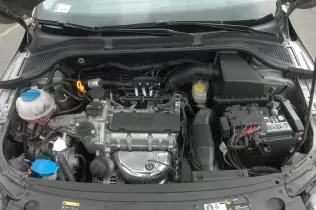 © gazeo.comA three-cylinder engine reduces the cost of consummables (such as spark plugs and ignition cables), but why does it have to be so loud?
© gazeo.comA three-cylinder engine reduces the cost of consummables (such as spark plugs and ignition cables), but why does it have to be so loud?The problem is, this small engine is surprisingly loud. Its design makes it rattling in a very distinctive way, and it’s not really muted that well, so at higher speeds you can’t fail to notice it. But apart from that, we can’t complain. The engine provides decent dynamics, and if you don’t speed too much, its fuel consumption won’t be too high. Of course, the dynamics are not breathtaking, but if you’re buying a workhorse and want the poor creature to compete in races, you can only blame yourself.
But the main factor that lowers the cost of driving is not the engine itself, but the gas system dedicated to it, a Landi Renzo Omegas. The only thing in which it’s different from systems dedicated to 1.4 and 1.6 MPI engines, is that the injection rail (manufactured by MED) has 3 sections instead of 4. Taking into account traffic jams, this car could really use a start/stop system to further reduce operating costs, even with this basic engine. Especially that a warmed-up engine starts straight on gas, thanks to setting up the Omegas appropriately. Though Rapid – according to its trip computer that does not take into account switching between petrol and LPG – is able to settle for 6.3 liter per 100 km in the city (late evening and night) and 5.6-5.8 l/100 km in extra-urban areas (driving at 70-90 km/h), being stuck in traffic jams may double its needs. That’s why it’s much better to have it powered by gas, not fluid.
Zobacz stronę producenta:
LandiRenzo
the same power on petrol and LPG?
The answer awaits you on page two!
Left: 50%
You may also find these interesting:
 loading results...
loading results...
